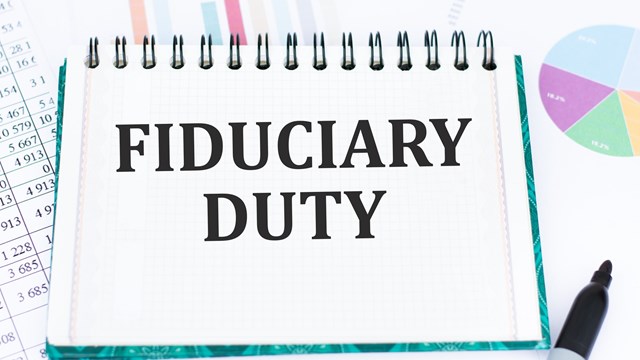
The collapse of the New York real estate market in the late 1980s left dozens, if not hundreds, of co-ops unable to pay or refinance their mortgages. Many sponsors managed to have their plans declared effective with only 15 percent of the units soldthe minimum required by law and then watched the co-op market disintegrate. Unable to meet the maintenance payments on the units they still held, sponsors defaulted or went bankrupt, leaving the co-op corporation with occupied units on which the rents didn't cover the maintenance.
Abbey Goldstein, lawyer for Kew Court, a co-op at 85-11 Lefferts Boulevard in Queens which is now emerging from its troubles, says, The problems often weren't ones of bad faith but simple economics. If a sponsor bought a rental building for conversion too late in the cycle, he could easily have paid too much in relation to where co-op unit prices were headed.
With defaulted or bankrupt sponsors, many new conversions were unable to meet the debt service on their underlying loans, putting the entire co-op in jeopardy. With few owner-occupants to carry the costs of the building, the individual units become virtually unsalable, as no lender will finance the purchase of a unit in such a building. Rob Rauch, treasurer of 328 West 17th Street, says, We spent five years in limbo and lost several shareholders to bankruptcy while we tried to work out our loan with the Resolution Trust Corporation.
What a White Knight Looks For
Can co-ops that have collapsed financially be resurrected? For some, the answer is no, and ultimately, these will be converted back into rental buildings, usually with co-op owners losing most, or all, of their equity. Fortunately this has happened only very rarely. For others, the answer is yes, not only can the economic bind end, but the co-ops can thrive and appreciate handsomely. But for this to happen, several very strict requirements must be met.
The Cheshire Group is one of a small number of New York firms that actively invest in broken co-ops and helps nurse them back to health. Sometimes known as White Knights, these firms look for a specific set of criteria before becoming involved in salvaging a financially troubled co-op.
To begin with, we ask: Is this a bona fide co-op? Do any owner-occupants actually live there? Some conversions during the 1980s were declared effective with a minimum number of sales, many of those phantom sales to individuals tied in some way to the sponsor. Such a building, despite the legal designation of co-op is still essentially a rental building and is unlikely to become a functional co-op. The key point here is that to have any hope of emerging as a healthy cooperative entity, there must be real shareholders who live in the building, who have a stake in the success of the workout and who are willing to work from within the co-op to get the job done. Without this, there is virtually no hope the co-op will survive.
The second question is: How many units were sold to owner- occupants? Occupied units sold to investors can greatly complicate the workout process. Investors have substantially different interests than owner-occupants. They maximize their return on investment by renting. Moreover, renters don't care about the value of the whole property the way owners do. While it is not impossible to rescue a building with a large percentage of investors, it is difficult.
Perhaps the most important question we need to ask is: How many vacant or market rent apartments are there? When added to the number of units sold to owner-occupants this number should be over 50 percent of the total number of units in the building if there is to be real hope of solving the building's problems. This is a crucial test, because unless the building can achieve 50 percent owner-occupancy, it has almost no hope of qualifying for an institutional loan. Without such financing, the individual units will almost never become easily saleable.
We also look to see if there is someone on the board who's mad as heck at the current situation and is willing to move heaven and earth to get the job done. A team leader, motivator and decision-maker on the inside is essential. It's far better for the board to be strongly motivated with its own agenda than for it to be passive. Someone on the inside has to be pushing as hard as the outside workout group.
Liliana Rubio, president of Hyde Park Owners Corporation, another co-op that is now regaining financial health after a financial collapse, says, This has been more time than I ever imagined, but saving this co-op is the most important thing I can do for my community.
The final question to answer in deciding whether a workout is possible is: Will the bank (or agency) holding the mortgage make a deal? Some lenders will restructure and hold on, other will sell out. It's important to know which kind of lender holds your paper.
What Your Savior Will Do
If your co-op has passed all these tests, there is a good chance that the building can be saved as owner-occupied housing. The role of the White Knight is fairly straightforward. They usually acquire the underlying debt from the lender and restructure the loan to the co-op. If there are back taxes or specific building repairs to be made, they will advance the cash for these to be taken care of. At 328 West 17th Street, Cheshire paid $500,000 in back taxes, while at 8511 Lefferts Boulevard in Kew Gardens, Cheshire funded lobby and hallway improvements and a line of credit for future capital improvements. Our firm does whatever is necessary to bring the building to the point at which unsold, vacant and market rent apartments can be sold. Typically, we then share in the proceeds achieved from the sale of these units. Our ultimate goal is to get the building up to the 50 percent owner-occupied mark, to arrange for an institutional lender to provide end-loan financing for the units, and to refinance the underlying mortgage. Once these events have occurred, the co-op is essentially on its way.
The key to achieving this success, however, is a realistic assessment of the elements that must be in place ahead of time. Understanding the existing situation ensures that the co-op pursues an attainable goal.






Leave a Comment